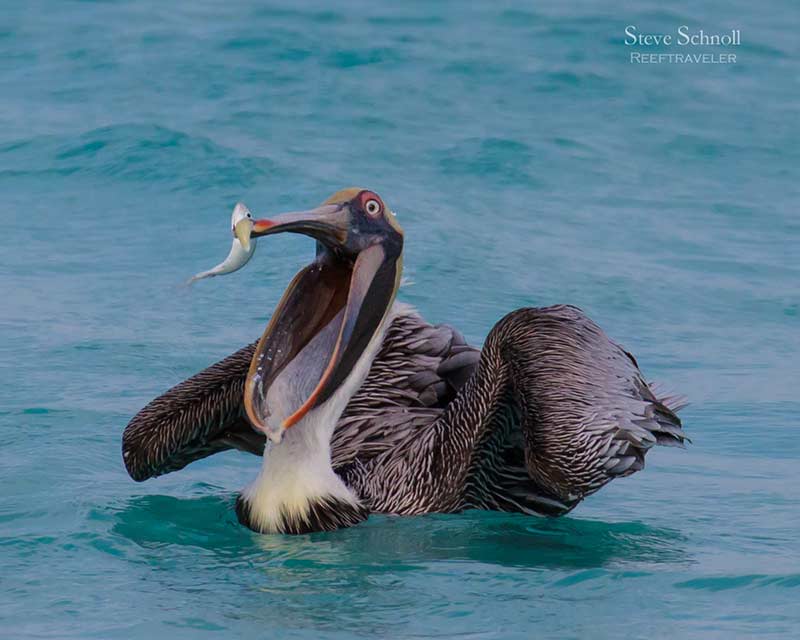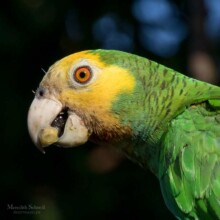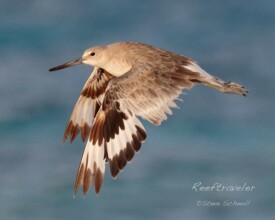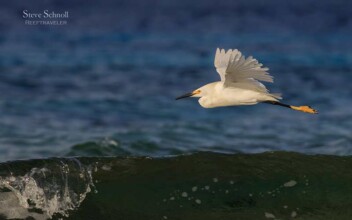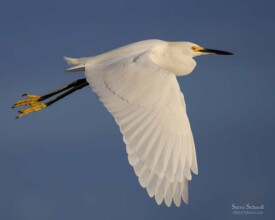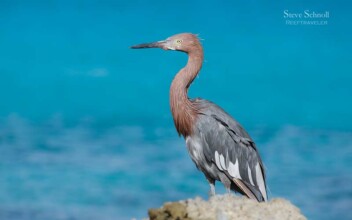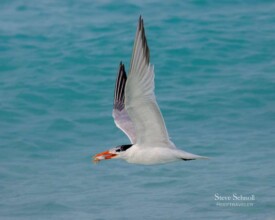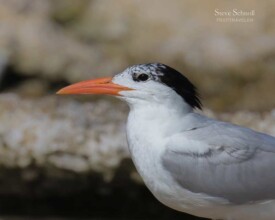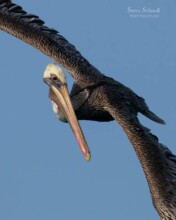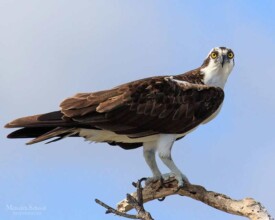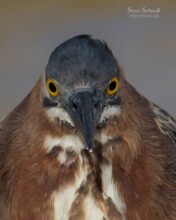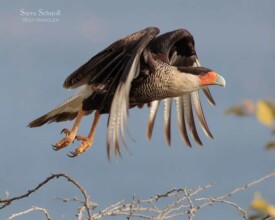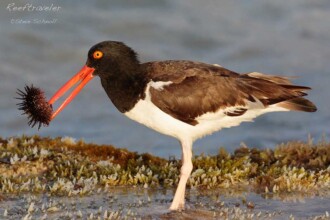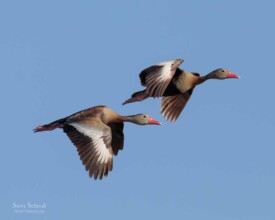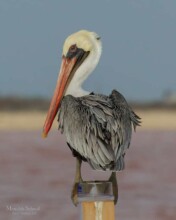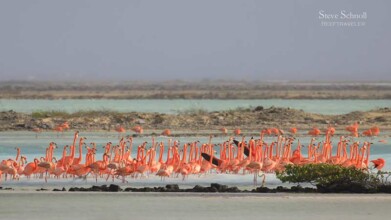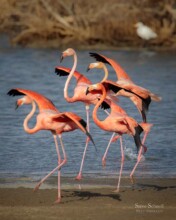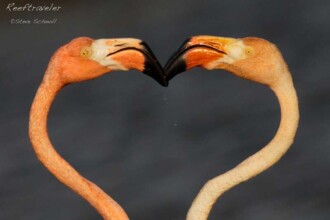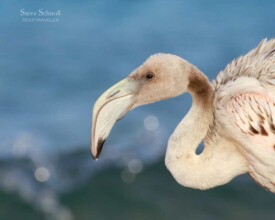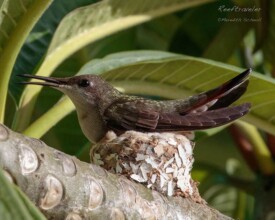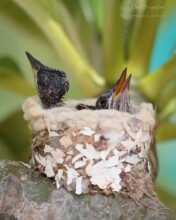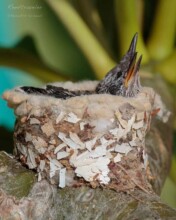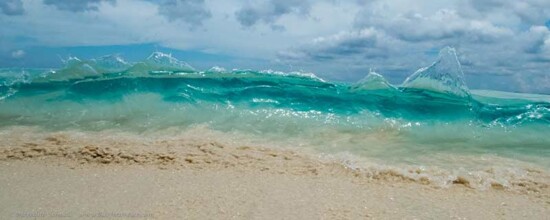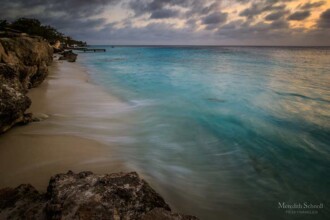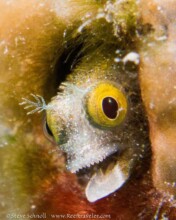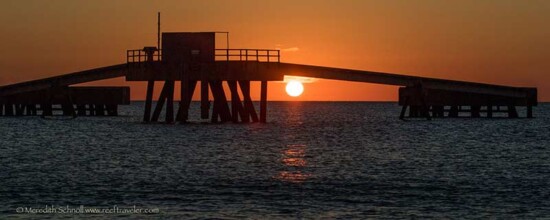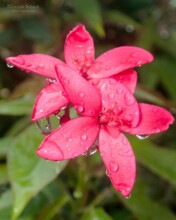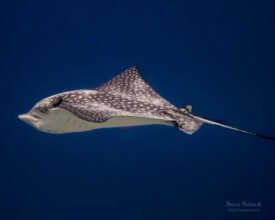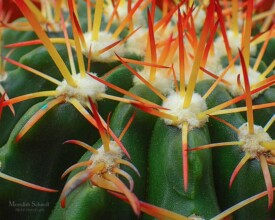Meet Steve and Meredith Schnoll of ReefTraveler.
Bonaire is blessed to have a plethora of excellent professional and amateur photographers living on the island. These talented people capture the heart and soul of Bonaire–nature in all its glory–so that all of us can enjoy what the island offers. Today, the Bonaire Insider highlights the bird photography of Steve and Meredith Schnoll, of ReefTraveler. They will inspire you to try your hand at bird photography on your next Bonaire visit.
Bonaire’s Avian Diversity.
What surprises most visitors to Bonaire is the great diversity of birds which live on the island. With a wide variety of habitats, from dry forests to salt ponds, to shorelines, there are a variety of birds which inhabit each. Steve and Meredith quite adeptly show some of Bonaire’s most popular avian residents or migrants.
Capturing that split second.
But just how do they manage to capture these exceptional images–that split second in time when everything comes together? Steve and Meredith happily shared some of their tips and tricks on getting fabulous bird images.
Shoot during “golden hour.”
This is the magical light at dawn and dusk when the sun is nearest to the horizon. Keeping the sun and wind to your back can help reduce unwanted shadows and ruffled feathers (literally!). This also is the time when you will find many birds to be more active.
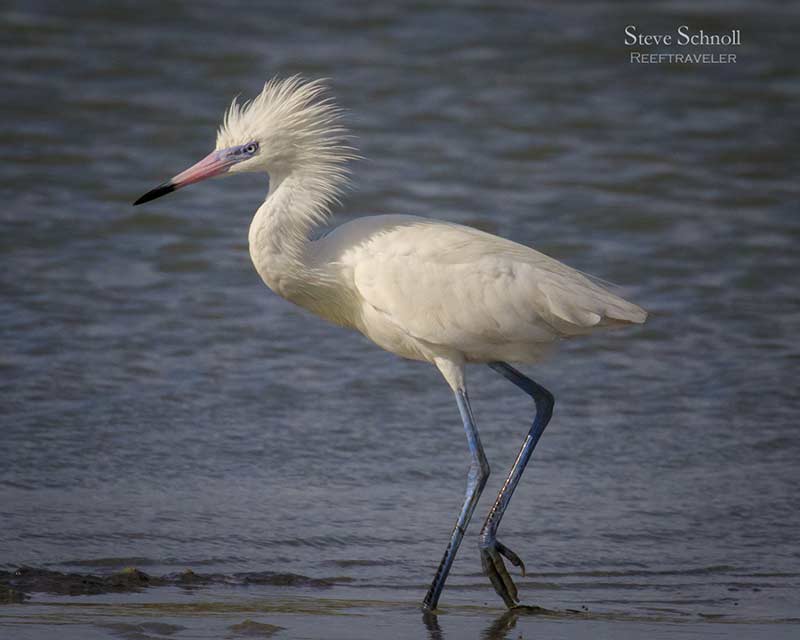
Composition is key.
Keep subjects clear of distractions, and in front of pleasing backgrounds to make good shots great. Getting to eye level with birds is usually a plus, if possible, which also serves to remove “busy” backgrounds.
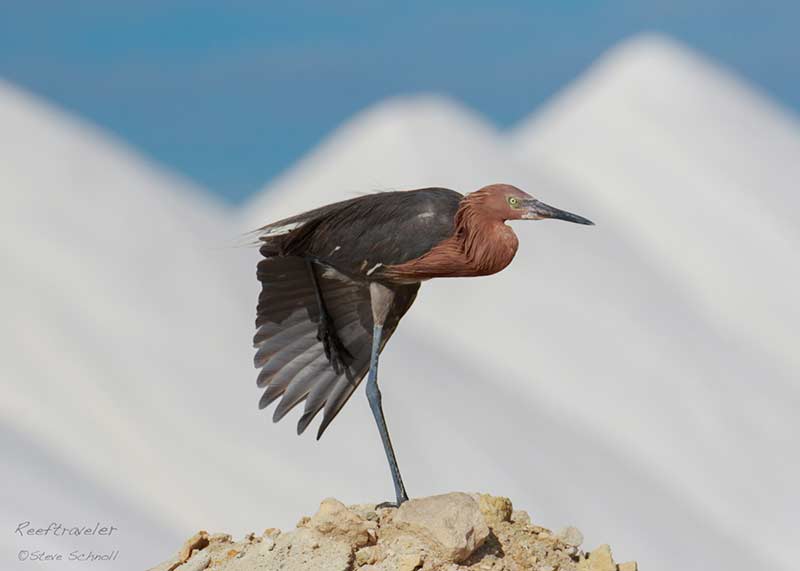
Master your camera’s exposure settings.
Knowing how to work the camera’s controls for aperture, shutter speed and ISO is critical for getting the best possible results using ambient light (naturally occurring light).
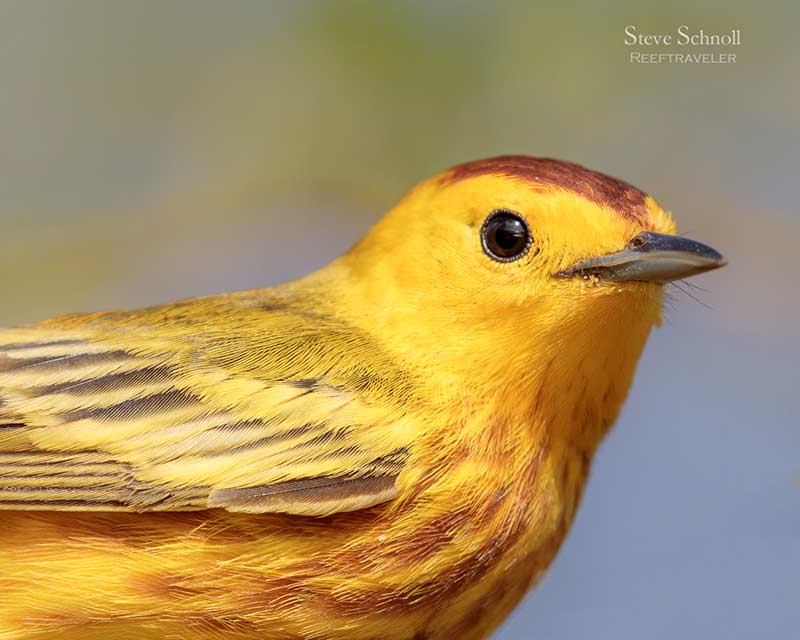
Sharp focus is absolutely essential.
Capture your image sharply. Bird photography requires you to focus quickly and accurately, to hold the camera and lens still. While Steve and Meredith shoot mostly handheld, using a tripod, monopod, beanbag, or even a car door to support a telephoto lens can help you get sharper images, especially in low light situations. Learn and practice how to position your body and camera for stability, and even breathing techniques contribute to making better images.

Know your environment.
Try to learn a bit about the birds and their habitat, including their songs, behaviors, and markings. Many of us hear birds before spotting them–when you know their songs, they become easier to see. (Using the Merlin Bird ID mobile app can assist with this learning process.)
Shoot relentlessly, post selectively.
Given the low cost of digital image capture, it is easy to take more images than people will want to see. Learning to curate and share only your very best few pictures will set you apart from snapshot photographers. While in Tanzania on safari a couple of years ago, Steve and Meredith shot 45,000 images between the two of them, yet they culled that down to only 45 images they used in their online gallery. That’s a 0.1% keeper rate, in a subject-rich environment.
Keep shooting, even when you think you have your images, just like Steve and Meredith did with these images of a mother Ruby Topaz Hummingbird on her nest, and with her young.
“Always leave them wanting more!”
Cameras and settings do not make the photographer, but they sure can help!
Both Steve and Meredith use Canon DSLRs and lenses for most of their bird photography. Steve’s main setup is a Canon 5D Mk IV body and 100-400mm telephoto lens with a 1.4x teleconverter, for a top effective focal length of 560mm. Meredith shoots with the Canon 7D Mk II with a 1.6x crop sensor and 70-300mm lens, which reaches 480mm equivalent. On the plus side, these setups allow them to capture far better images than with a phone, which is one of the most popular “cameras” today. The tradeoff is that they are bigger and heavier, though still quite a bit smaller and more portable than the scuba tank-sized lenses you see at pro sporting events.
For their underwater photography, they both use Canon point and shoot cameras in aluminum housings, with natural light, or with an external strobe or two. In 2014, one of Steve’s shots of the Bonaire Banded Box Jellyfish (Tamoya Ohboya) was submitted to the Smithsonian as one of the earliest recorded images of this newly-named species.
Ensuring photography does not interrupt bird behaviors.
It’s always important for nature photographers to remember that the shot is not the “be all and end all.” When photographing any animal in its natural setting, their normal behaviors should not be interrupted because they are alarmed by your presence. Because of this, both Steve and Meredith try to stay far enough away from birds to avoid influencing their behavior or scaring them off. That means utilizing the zoom lenses much of the time, especially for birds that are far away and/or small. Both tend to shoot in aperture priority (AV on Canons or AP on Nikons) or in Manual mode, with the f/stop close to wide open to let in the greatest amount of light and to also help create pleasing blurred backgrounds. To capture high speed of bird motion and flight, they then adjust the ISO and shutter speed to be fast enough to freeze the action (mastering your camera’s exposure settings as mentioned above).
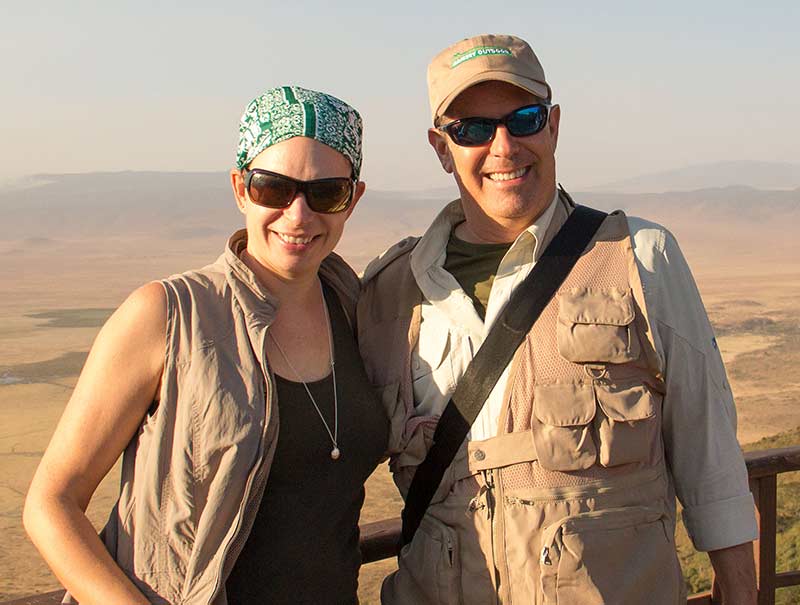
About Steve and Meredith Schnoll.
Steve Schnoll.
Steve grew up in New Jersey, near New York City, where they still live much of the year. He first visited Bonaire with his father for a dive trip 40 years ago, and over the years, he has collected dozens of flamingo stamps in his passports, staying both at the Divi Flamingo Beach Resort & Casino and also the Sand Dollar Resort Condominiums. Steve tells us:
I’ve been fascinated by nature and technology since I was a much younger kid. I started working at age 13 and soon saved enough to buy my first SLR – with a bit of help from my parents. It used film, which I learned to develop and print by hand in summer camp. My first published photo, of bluegrass musician Roy Bookbinder, appeared in Guitar Player magazine in 1979. Almost forty years later, that check remains the most I’ve ever earned from photography, which is why it remains a passion and interest, not my full-time career. For us, sharing and teaching is its own reward. We had the good fortune to be invited to work with CIEE high school students, including some very inspiring young Bonairean Junior Rangers, who give us confidence that the next generation will help sustain the ecosystem.
Meredith Schnoll.
Meredith grew up in West Virginia and moved to New Jersey for work after University. When she and Steve first visited Bonaire together shortly after their wedding in 2010, they decided to plant deeper roots and have been spending more and more time here ever since, living part time in Belnem for the past five years. Meredith tells us:
I took up photography after I met Steve and we began traveling the world together. At first, I was content with point-and-shoot snapshots, but I quickly wizened up and realized that I needed to take advantage of the opportunity sitting right beside me! Steve was an amazing teacher and mentor and still is. My first published photo appeared in a Dutch book called “Over de Regenboog” by Janneke Schenk in 2017. In addition to loving to capture nature’s beauty, I have developed a love for photo editing. We both believe in keeping our nature images as realistic and true to what we’ve seen as possible – with the occasional exception like a black & white treatment. We mainly use Adobe Lightroom to organize and edit images, and I’ve also learned Photoshop.
But there’s more than just bird photography.
Both Steve and Meredith are accomplished photographers with other subjects as well, including underwater marine life. You’ll find below a gallery of some of their other subjects, as they enjoy shooting nature in any form or visit their website for additional information about the couple.
Bonaire is a stop on the Caribbean Birding Trail.
in 2016, Bonaire was honored to be included on the Caribbean Birding Trail. We hope that these wonderful images by Steve and Meredith inspire you to try your hand at bird photography on your next visit to Bonaire. Birds are everywhere on the island, all you need do is open your eyes to them, but there are great local birding guides to assist you as well, or simply pick up one of the fantastic field guides available to help you locate many of the island’s avians!
(Source: Steve and Meredith Schnoll)

